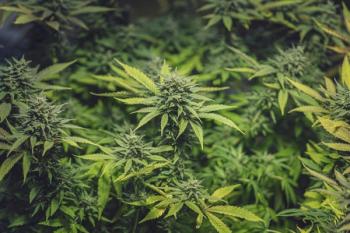
As Use Increases, Understanding Marijuana Is Essential for Pharmacists
Patients should start low, go slow, and track their own dosing and effects
As a pharmacist, some of your patients are likely using marijuana—be it bud, concentrates, edibles, extracts, tinctures, or topicals. All marijuana formulations have documented interactions with drugs and foods, and none have the kind of randomized controlled trial data that pharmacists usually turn to for counseling.
“We need to open the door for communication about these products with our patients,” said Kam Capoccia, PharmD, BCPS, CDCES, Clinical Professor of Community Care, Western New England University College of Pharmacy and Health Sciences. “Whenever we take a history, we include medical and recreational marijuana along with tobacco, medications, and health history. If you ask, you will learn.”
Capoccia discussed the latest developments in marijuana at this year’s American Pharmacists Association 2022 Annual Meeting & Exposition in San Antonio, Texas.
Legal questions about marijuana use are the easiest to answer, she said. On the federal level, the only legal form of any Cannabis species is hemp, which must contain ≤0.3% delta 9-tetrahydrocannabinol or THC, the principal psychoactive component.
The tide of CBD products flooding pharmacies and other retail channels are made from hemp, which leaves them legal as supplements under federal regulation. But, Capoccia noted, that’s where the complications begin.
A growing number of states—but not all states—have legalized some form of marijuana, either medical or recreational—or both. Each state has its own rules and regulations on growing, processing, selling, and using marijuana in its different forms. “As a pharmacist, it is important to know the rules for you and your patients in your own state,” Capoccia said.
A 2021 Gallup Poll found that 49% of respondents have tried marijuana, up from 45% in 2017 and 2019. Gallup reported that 1 in 7 Americans use CBD products, primarily for pain (40%), anxiety (20%), sleep (11%), and arthritis (8%).
Smoking is the most common formulation for young adults, but age is no barrier: In 2020, 53% of patients surveyed at a University of California, San Diego Seniors Clinic said they use cannabis regularly. Forty-six percent use CBD-only products for pain/arthritis (73%), sleep disturbance (29%), anxiety (24%, and depression (17%).
“Everyone is using marijuana, you just have to ask to find out,” said Capoccia, “and use is growing. Among older patients at UCSD, more than half said they tried it for the first time after the age of 50.”
Because federal regulation has long criminalized any use of marijuana, there are few large randomized controlled trials, and no standards for purity or composition, Capoccia noted. Labeling can be questionable as well. A 2017 study of 84 CBD products from 31 companies found that just 30.95% of labels were accurate, with 42.85% of products under labeled and 26.19% over labeled. Pharmacists, therefore, should advise patients to use only products with analysis certificates from recognized and reliable laboratories, she cautioned.
Lexicomp and the Natural Medicines Database show multiple drug-drug interactions for marijuana, including protein binding displacement, many CYP450 interactions, and P-glycoprotein substrate binding. There are also multiple food-drug interactions.
“What you have in your stomach matters,” she said. “A fatty meal increases absorption of CBD, which can lead to an unintended overdose.”
The FDA strongly advises against the use of marijuana during pregnancy or while breastfeeding. Marijuana crosses the placenta and has been associated with lower birthweight and increased neonatal ICU admissions, while CBD is fat soluble and lingers in breast milk.
There is conclusive or substantial evidence of effectiveness of marijuana for chronic pain, as an antiemetic in chemotherapy-induced nausea/vomiting, and patient-reported multiple sclerosis spasticity, according to the National Academies of Sciences, Engineering, and Medicine. Systematic reviews and randomized controlled trials found that oral CBD can significantly reduce the use of opioids by patients with neuropathic pain as well as reduce pain compared to placebo. The Arthritis Foundation has also concluded that CBD may help with arthritis pain, Capoccia added; the Foundation identified no major safety issues, while warning that CBD should not be used to replace any disease-modifying drugs. With no established guidelines, the group advised starting with low doses and increasing in small increments.
A 2020 review in BMC Psychiatry concluded that the evidence is too weak to make any cannabinoid-based recommendation for anxiety, post-traumatic stress disorder, depression, insomnia, and other psychiatric disorders.
“Research is expanding,” Capoccia said. “The evidence is not solid and there are no standards, a very uncomfortable space for pharmacists, but CBD demonstrates some benefits. We should be counseling on product selection, safety, efficacy, evidence, and interactions. I advise people to start low, go slow, and to use a journal to track their own dosing and effects. We don’t have any other guidance for now.”
Reference
Capoccia K. The many faces of marijuana: Implications for pharmacists. Presented at: American Pharmacists Association 2022 Annual Meeting & Exposition; March 18-21, 2022; San Antonio, TX
Newsletter
Pharmacy practice is always changing. Stay ahead of the curve with the Drug Topics newsletter and get the latest drug information, industry trends, and patient care tips.





























































































































